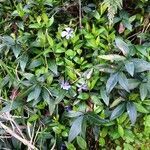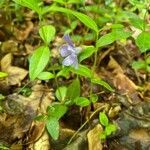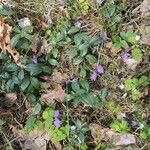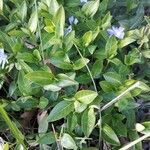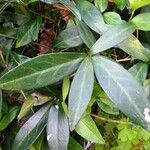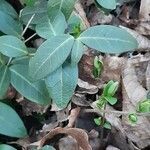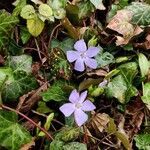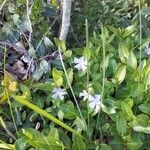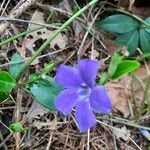Herbs perennial. Flowering stems to 20 cm. Leaf blade oblong, ovate, or elliptic, 1-4.5 X 0.5-2.5 cm, base rounded or cuneate, margin not ciliate. Pedicel 1-1.5 cm. Sepals narrowly elliptic, 3-5 mm. Corolla lilac-blue, tube 0.9-1.1 cm, limb 2.5-3 cm in diam., lobes obliquely truncate. Filaments longer than anthers; anthers puberulent at apex. Follicles erect. Fl. May. 2n = 46.
Stems somewhat woody, trailing or scrambling, to 1 m, forming mats, the flowering branches ± erect; lvs glabrous, coriaceous, lance-elliptic, 3–5 cm, entire; cor-tube 8–12 mm, the limb 2–3 cm wide; 2n=46. Native of s. Europe, often escaped from cult. into roadsides and open woods in our range. Apr., May.
A spreading evergreen plant. It forms tight mats. It grows 20 cm high and spreads 1.5-3 m wide. The leaves are green and 5 cm long. The flowers are star shaped and violet blue. The flowers are smaller than Vinca major. They are 3 cm across.
Herb to 50 cm with long stoloniferous shoots.. Leaves ovate.. Flowers rich blue.
